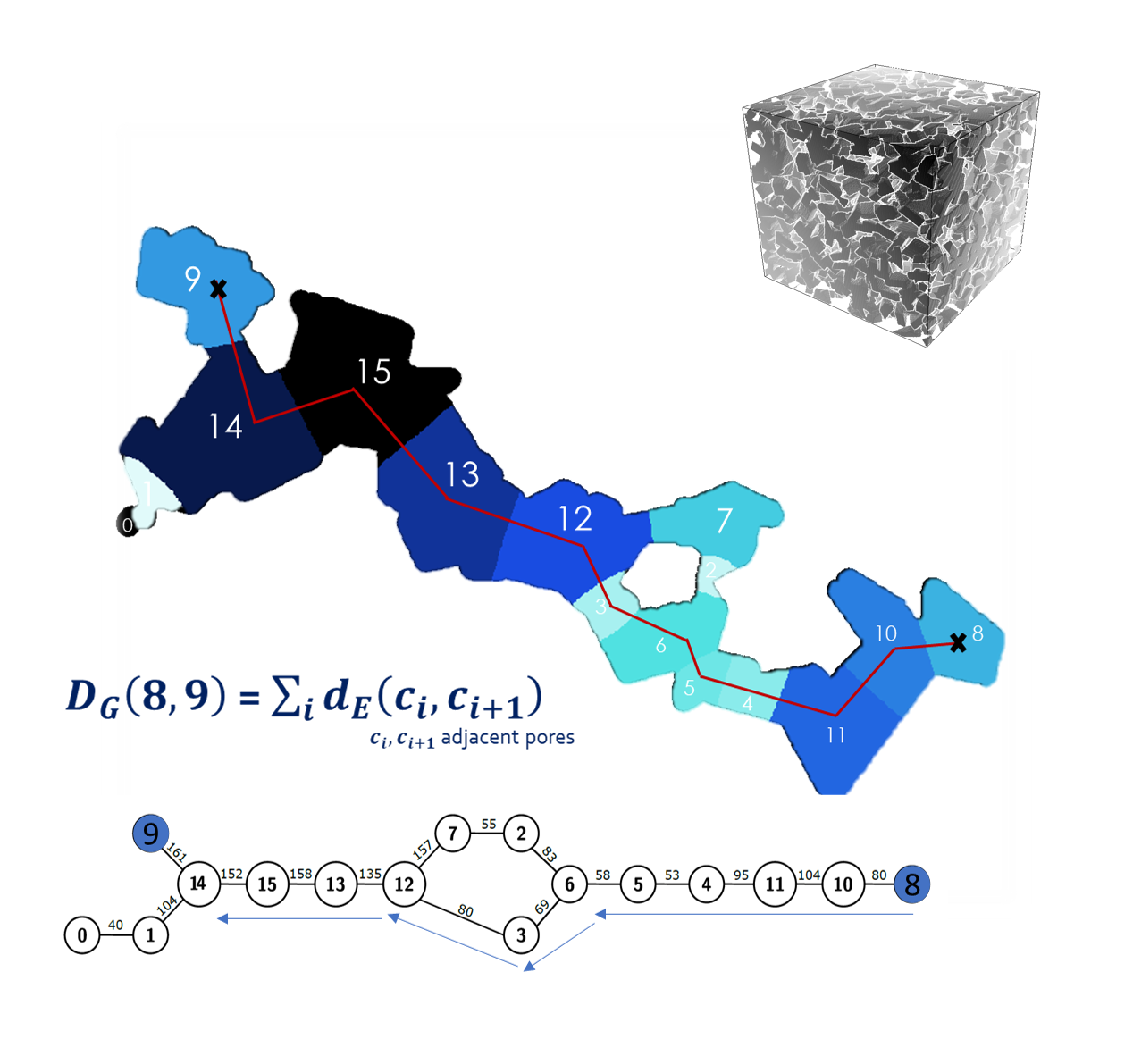Graph-based tortuosity proposes a new way of calculation of the M-tortuosity descriptor [1]. This algorithm is based on the PNP method [2] to extract pores and construct a graph from the porous phase of a binary microstructure. Through this scheme, pores are the nodes, distances between pores are the arcs between nodes and the goal boils down to the determination of the shortest paths between nodes. The tree search is done by the Djikstra’s shortest path algorithm.
The input for the G-Tortuosity algorithm is a binary microstructure volume (3D). Tortuosity is evaluated in the white phase.
[1] Chaniot, J., Moreaud, M., Sorbier, L., Fournel, T., Becker, J.M.: Tortuosimetric operator for complex porous media characterization. Image Analysis and Stereology 38 (1), 25–41 (2019)
[2] Hammoumi A., Moreaud M., Jolimaitre E., Chevalier T., Novikov A., Klotz M. (2020) Efficient Pore Network Extraction Method Based on the Distance Transform. In Artificial Intelligence and Industrial Applications. A2IA 2020. Lecture Notes in Networks and Systems, vol 144. Springer, Cham
Update 20220401: minor bug fixes and added pore volume weighting.
If you use this algorithm, please cite:

Comments
You must be logged in to post a comment.